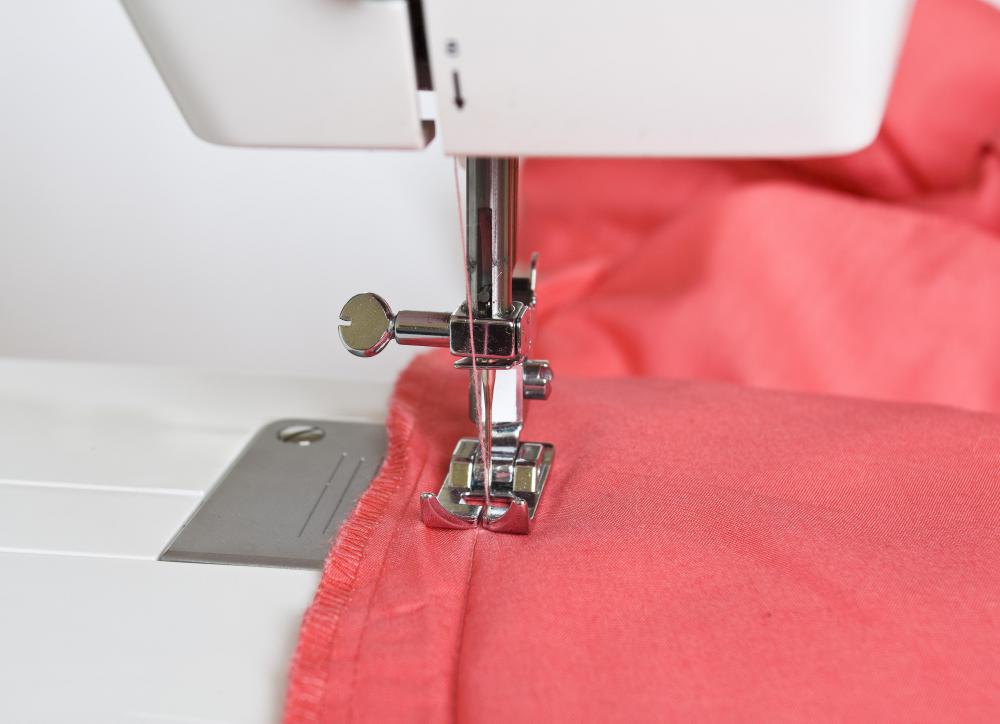At WiseGEEK, we're committed to delivering accurate, trustworthy information. Our expert-authored content is rigorously fact-checked and sourced from credible authorities. Discover how we uphold the highest standards in providing you with reliable knowledge.
How Do I Choose the Correct Sewing Machine Needles?
A seamstress can choose the correct sewing machine needles by first examining the type of project she will be completing. The composition of the fabric will typically determine the kind of needle that will be needed. Different thicknesses of fabric, as well as its natural elasticity or rigidity, can break a needle if the incorrect one has been used. These needles are generally labeled according to the fabric or the thread that will be used, and may be purchased online or at a needlework craft store.
Most sewing machines will accept any type of sewing machine needles. Specialty machines, such as long arm quilting machines, may require a longer needle that has been specifically fabricated to fit into the machine. If the machine being used, however, is a standard table-top home machine, virtually any needle may be used.

The type of project being sewn will determine which sewing machine needles are required. A basic needle is referred to as a universal needle. This type of needle is generally used for stitching together fabrics of a medium to light weight thickness, such as cotton. These needles are differentiated by size, which can be used to accommodate the type of thread used. The needle can be first slipped onto the thread and allowed to slide down a short length of it to determine whether a large size is required.

Denim sewing machine needles should be used when stitching thick materials. The needle is somewhat longer and more durable than a standard sized needle, and is designed to punch through tightly woven fabrics. It can also be used when stitching in areas of layers, such as can occur when completing machine applique. Leather needles are also available for these types of projects, but should typically be reserved for use in upholstery. Using these types of needles for such projects prevents the needle from breaking during the stitching process.
Elastic materials, like jersey, spandex, modal, and lycra require the use of stretch needles. These needles are designed to interact with the high give and pull of the fabric without breaking or pulling holes in the material. Universal needles can be used on these fabrics, however, the seamstress must be careful not to create pull in the fabric while moving it beneath the needle so as to create uneven stitch lines and unintentional gathers in the material.
Decorative work can be completed using double, triple, and embroidery sewing machine needles. Double and triple needles provide two or three needle points affixed to one central connecting pole. The central pole is inserted into the machine just as a single needle would be, and the needles work together to create elaborate designs. These may be used with standard stitch settings to create a mirror image design, or in conjunction with specialty stitch settings that have been pre-programmed into certain machines. Embroidery needles are designed to work with embroidery machines using silk, rayon, and cotton threads to create needlework motifs.
AS FEATURED ON:
AS FEATURED ON:












Discuss this Article
Post your comments